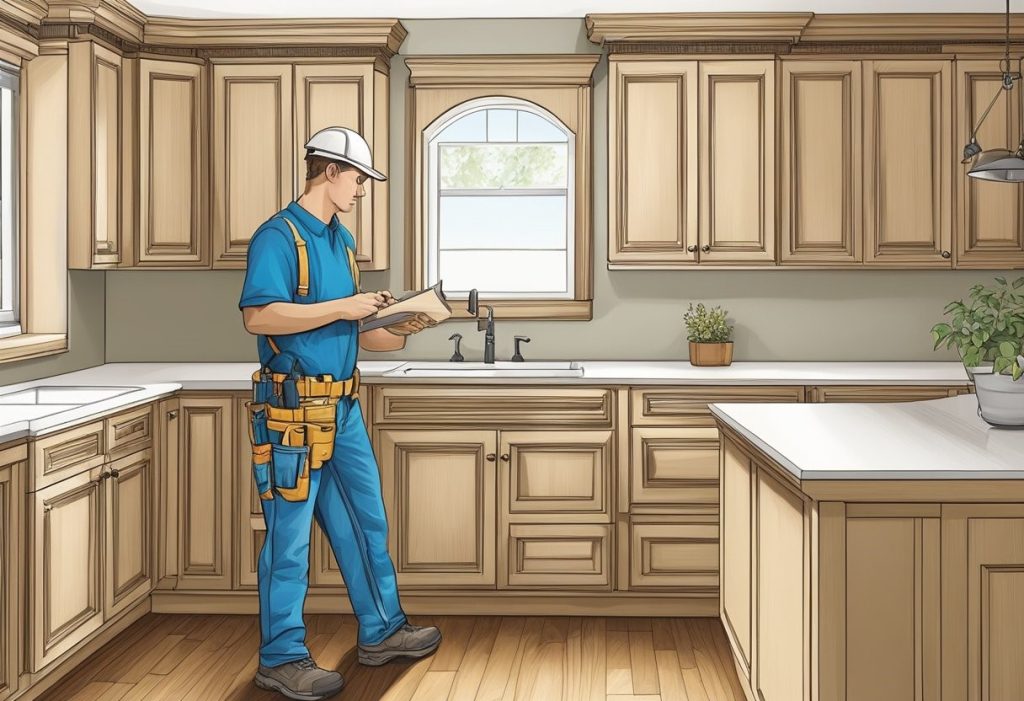
Finishing carpentry is the art of adding the final touches to a construction project. It involves the installation of moldings, trims, and other decorative elements that give a building its character and style. Finishing carpentry requires a high level of skill and attention to detail, as even the slightest mistake can ruin the entire project.
One of the key aspects of finishing carpentry is the ability to work with a variety of materials. Carpenters must be able to cut, shape, and install wood, metal, and plastic moldings, as well as other decorative elements. They must also have a keen eye for design and be able to match the style and color of the existing materials to create a cohesive look.
Another important aspect of finishing carpentry is the ability to work with precision and accuracy. Carpenters must be able to measure and cut materials to exact specifications, ensuring that everything fits together perfectly. They must also be able to work quickly and efficiently, as finishing carpentry is often the last step in a construction project and deadlines can be tight.
Tools and Materials
Measuring and Marking Tools
Measuring and marking tools are essential for accurate and precise carpentry work. A tape measure, combination square, and level are must-have tools for any carpentry project. A chalk line is also useful for marking long straight lines. A good set of pencils and a sharp knife are also necessary for marking and cutting.
Cutting Tools
Cutting tools are crucial for any carpentry project. A circular saw, jigsaw, and miter saw are the most commonly used power tools for cutting lumber. A handsaw and a coping saw are also useful for making precise cuts. A sharp chisel and hammer are necessary for making mortises and other detailed cuts.
Fastening Tools
Fastening tools are used to join pieces of wood together. A cordless drill is the most versatile tool for drilling holes and driving screws. A hammer and nails are also necessary for certain types of joints. A nail gun is useful for larger projects and can save time and effort.
Materials and Supplies
The materials and supplies needed for finishing carpentry depend on the specific project. Lumber is the most common material used and comes in a variety of species and grades. Trim and molding are also common materials used for finishing work. Screws, nails, and adhesives are necessary for fastening materials together. Sandpaper and wood filler are used to prepare surfaces for finishing. Finally, paint, stain, and varnish are used to protect and enhance the finished product.
Techniques and Best Practices
Measuring and Layout
Accurate measuring and layout are essential in finishing carpentry. Before starting any project, it is important to take precise measurements and create a detailed plan. This will ensure that the final product fits perfectly and looks professional.
One technique for measuring and layout is to use a combination square. This tool allows for precise measurements and angles. It can also be used to mark lines on wood for cutting and drilling.
Another best practice is to use a level to ensure that the finished product is level and plumb. A laser level can be especially useful for larger projects.
Cutting and Shaping
Cutting and shaping wood is a critical aspect of finishing carpentry. One technique for cutting is to use a circular saw with a fine-toothed blade. This allows for clean and accurate cuts.
Shaping wood can be done using a variety of tools, such as a jigsaw or router. It is important to take your time and work slowly to ensure that the final product is smooth and even.
Installation
Installing finished carpentry requires precision and attention to detail. One technique for installation is to use a nail gun or brad nailer. This allows for quick and easy installation, while minimizing damage to the wood.
Another best practice is to use wood glue in addition to nails or screws. This will ensure a strong and lasting hold.
Finishing Touches
The finishing touches can make all the difference in a finished carpentry project. One technique is to sand the wood thoroughly to create a smooth and even surface. This will also help to remove any rough edges or splinters.
Staining or painting the wood can also add a professional and polished look. It is important to choose the right type of stain or paint for the wood and to apply it evenly.
By following these techniques and best practices, anyone can achieve professional-looking finished carpentry projects.